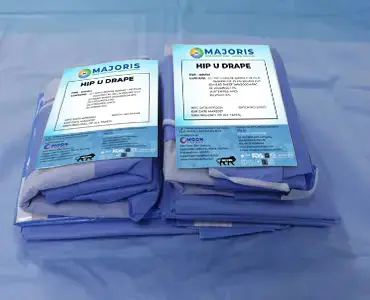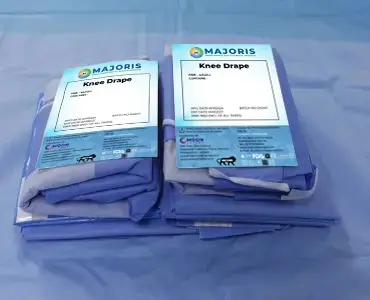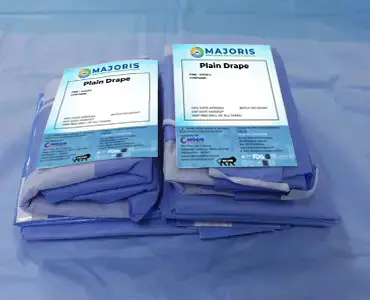Drapes

Hip U Drape
- Size and Shape: Larger and rectangular in shape, designed to cover the entire patient's body from the waist to the feet.
- Openings: Typically has a fenestration or an opening at the hip area to expose the surgical site while providing a sterile barrier.
- Adhesive Strips: Often equipped with adhesive strips or tapes around the fenestration to secure the drape in place and maintain a sterile environment.
- Absorbent Material: May have absorbent material around the fenestration to soak up fluids during the procedure.
- Reinforcement: Sometimes reinforced with extra layers or thicker material around the fenestration to prevent tearing during the surgery.

Knee Drape
- Size and Shape: Smaller and often square-shaped, designed to cover the area around the knee.
- Fenestration: Contains an opening or fenestration specifically positioned over the knee joint to expose the surgical site.
- Adhesive Border: Equipped with adhesive borders or tapes to adhere securely to the patient's skin around the knee area, maintaining a sterile field.
- Fluid Control: Usually features absorbent material around the fenestration to manage fluids and keep the surgical area dry.
- Reinforcement: May have reinforcement or extra layers around the fenestration to prevent tearing and ensure durability during the procedure.

Plain Drape
- Size and Shape: Available in various sizes and shapes depending on the specific use, but typically rectangular or square.
- No Fenestration: Unlike hip and knee drapes, plain drapes do not have a pre-cut opening or fenestration.
- General Purpose: Used for covering non-surgical areas or as additional layers to enhance the sterile field.
- Adhesive Borders: Often equipped with adhesive borders or tapes to secure the drape in place and maintain sterility.
- Absorbent Material: Some plain drapes may feature absorbent material to manage fluids and maintain a dry environment.
- Versatility: Plain drapes are versatile and can be used in various surgical and medical settings where a sterile barrier is required but specific exposure isn't necessary.
